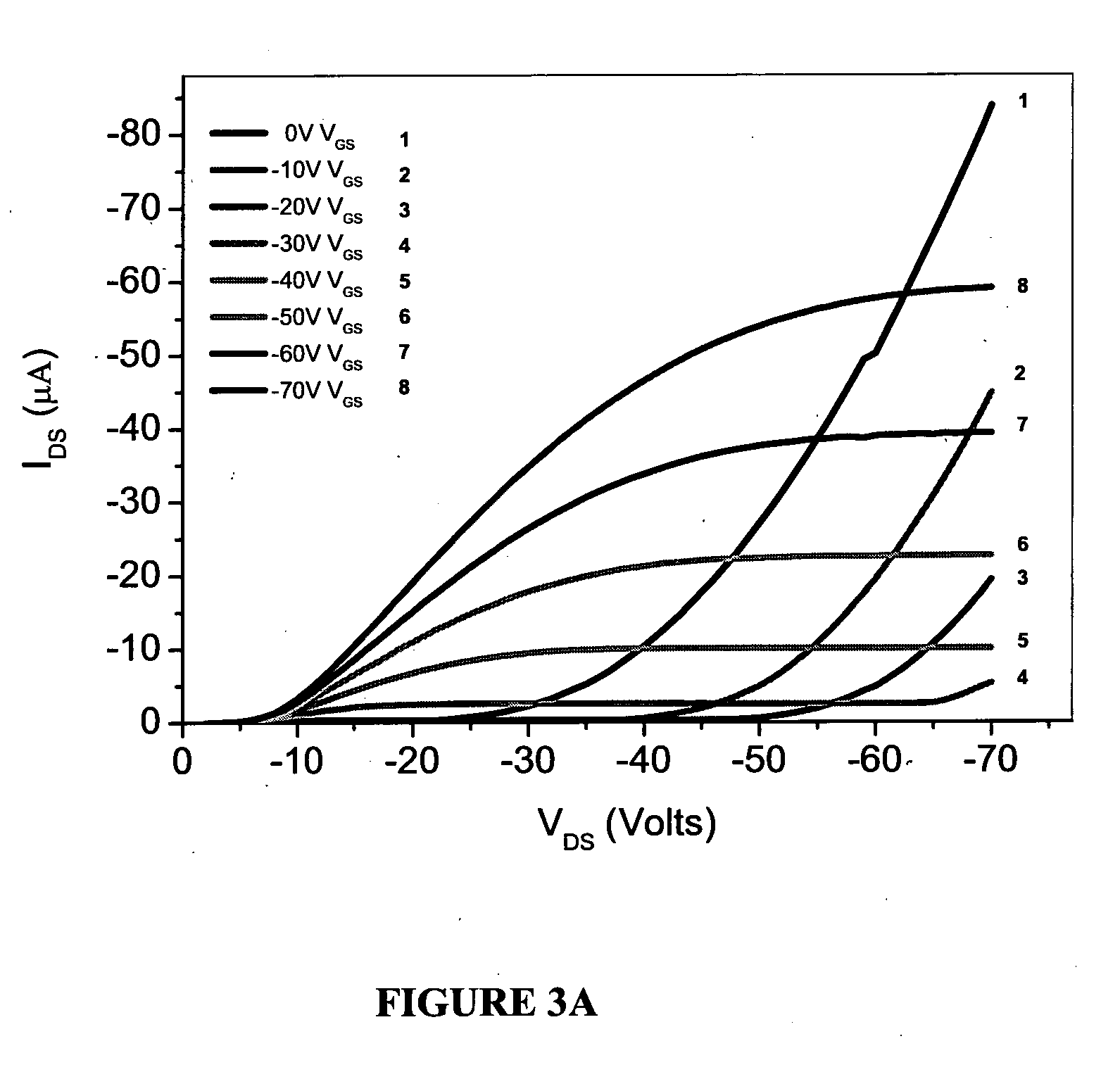Ambipolar polymeric semiconductor materials and organic electronic devices
a semiconductor material and polymer technology, applied in semiconductor devices, solid-state devices, thermoelectric devices, etc., can solve problems such as poor performance, achieve high electron and hole mobilities, efficient electron injection and transport, and low lumo energy level
- Summary
- Abstract
- Description
- Claims
- Application Information
AI Technical Summary
Benefits of technology
Problems solved by technology
Method used
Image
Examples
example 1
Synthesis of Polymer (1)
[0110]Polymer (1) was synthesized according to Scheme 1 as set out below, based on the following synthetic steps: i) diisopropylsuccinate / t-C5H11OK / 2-methyl-2-butanol / 120° C.; ii) 2-octyl-1-dodecyl bromide / K2CO3 / DMF / 130° C.; iii) NBS / chloroform; v) Pd(dppf)Cl2 / KOAc / 1,4-dioxane; vi) Pd(PPh3)4 / Aliquat 336 / 2M K2CO3 / toluene.
[0111](i) Synthesis of 2,5-dihydro-1,4-dioxo-3,6-dithienylpyrrolo [3,4-c]-pyrrole (1-2): Sodium metal (6.90 g, 0.30 mol) was added to 100 ml t-amyl alcohol and a small amount of iron (III) chloride (100 mg) was added. The mixture was stirred vigorously for 2 hr at 105° C. until the sodium dissolved. The solution was cooled to 85° C. and 2-thiophenecarbonitrile (22.0 g, 0.2 mol) was added. Diisopropyl succinate (16.6 g, 0.08 mol) dissolved in 10 ml of t-amyl alcohol was added dropwise to the reaction mixture over 1 hr at 85° C. The reaction mixture was stirred at this temperature for 12 hrs, then cooled to 50° C., diluted with 100 ml of methano...
example 2
Synthesis of Polymer (2)
[0116]Polymer (2) was synthesized according to Scheme 2 as set out below, based on the following synthetic steps: i) 2-butyl-1-octanol, H2SO4, 98%; ii) AgNO3 / KF / Pd(PhCN)Cl2 / DMSO, 62%; iii) 2-tributylstannylthiophene, Pd2dba3 / P(o-tolyl)3 / toluene, 75%; iv) 2 eq. NBS, 97%; v) Pd(PPh3)4, 2M Na2CO3, 2,1,3-Benzothiadiazole-4,7-bis(boronic acid pinacol ester), toluene, reflux, 24 hr, 56%.
[0117](i) Synthesis of 2-butyl-1-ocatyl 2-bromo-3-thiophenecarboxylate: In a 500 ml, round-bottomed flask equipped with a Dean-Stark apparatus and a water condenser were placed 4.5 g of 2-bromo-3-thiophenecarboxylic acid (21.7 mmol), 9.32 g (50 mmol) of 2-butyl-1-octanol, 0.44 g (4.8 mmol) of conc. H2SO4, and 100 ml of toluene. The mixture was heated under reflux for 24 hr. The mixture was'cooled to room temperature and then dissolved in ethyl acetate (100 ml) and the solution was washed with dilute sodium bicarbonate (twice) and water (twice), and then dried over MgSO4, and the sol...
example 3
Fabrication of Devices with Polymer (1)
[0122]Device Fabrication
[0123]Top contact / bottom gate OTFT devices were fabricated as follows.
[0124](i) Substrate Preparation: p+-Si (or n+-Si) / SiO2 substrates were used for OTFT fabrication where p+-Si (or n+-Si) and SiO2 work as gate contact and gate dielectric, respectively. Substrates were subject to routine cleaning using ultrasonication in acetone, methanol and de-ionized water. The cleaned wafers were dried under a nitrogen flow and heated at 100° C. for 5 minutes and then were subjected to UV-ozone treatment for 20 minutes.
[0125](ii) Self-assembled monolayer (SAM): p+-Si (or n+-Si) / SiO2 substrates were kept in a desiccator with few drops of octyltricholorosilane (OTS). A vacuum was applied to the desiccator for 3 minutes and then the desiccator was placed in an oven at 110° C. for three hours. p+-Si (or n+-Si) / SiO2 substrates were then removed from desiccators, thoroughly rinsed with isopropanol and dried under a nitrogen flow.
[0126](ii...
PUM
| Property | Measurement | Unit |
|---|---|---|
| electron mobility | aaaaa | aaaaa |
| electron mobilities | aaaaa | aaaaa |
| electron mobility | aaaaa | aaaaa |
Abstract
Description
Claims
Application Information
 Login to View More
Login to View More - R&D
- Intellectual Property
- Life Sciences
- Materials
- Tech Scout
- Unparalleled Data Quality
- Higher Quality Content
- 60% Fewer Hallucinations
Browse by: Latest US Patents, China's latest patents, Technical Efficacy Thesaurus, Application Domain, Technology Topic, Popular Technical Reports.
© 2025 PatSnap. All rights reserved.Legal|Privacy policy|Modern Slavery Act Transparency Statement|Sitemap|About US| Contact US: help@patsnap.com



